We drove to the Centro Historico and from the parking lot made a b-line to the Palace Belle Artes. The building was incredible to behold. I’ll just put in a few photos because, I’m not sure how to put this kind of building into words.The inside was spectacular as well. Each floor had a large cavity in the centre of the floor, so once could look from the bottom floor all the way up to the ceiling. The veranda of the top floor was adorned with faces with curled noses that I recognized from the Archeological museum as an Aztec symbol. These faces must’ve been added somewhat recently as there was a suppression of Aztec iconography for much of the history of Mexico City.
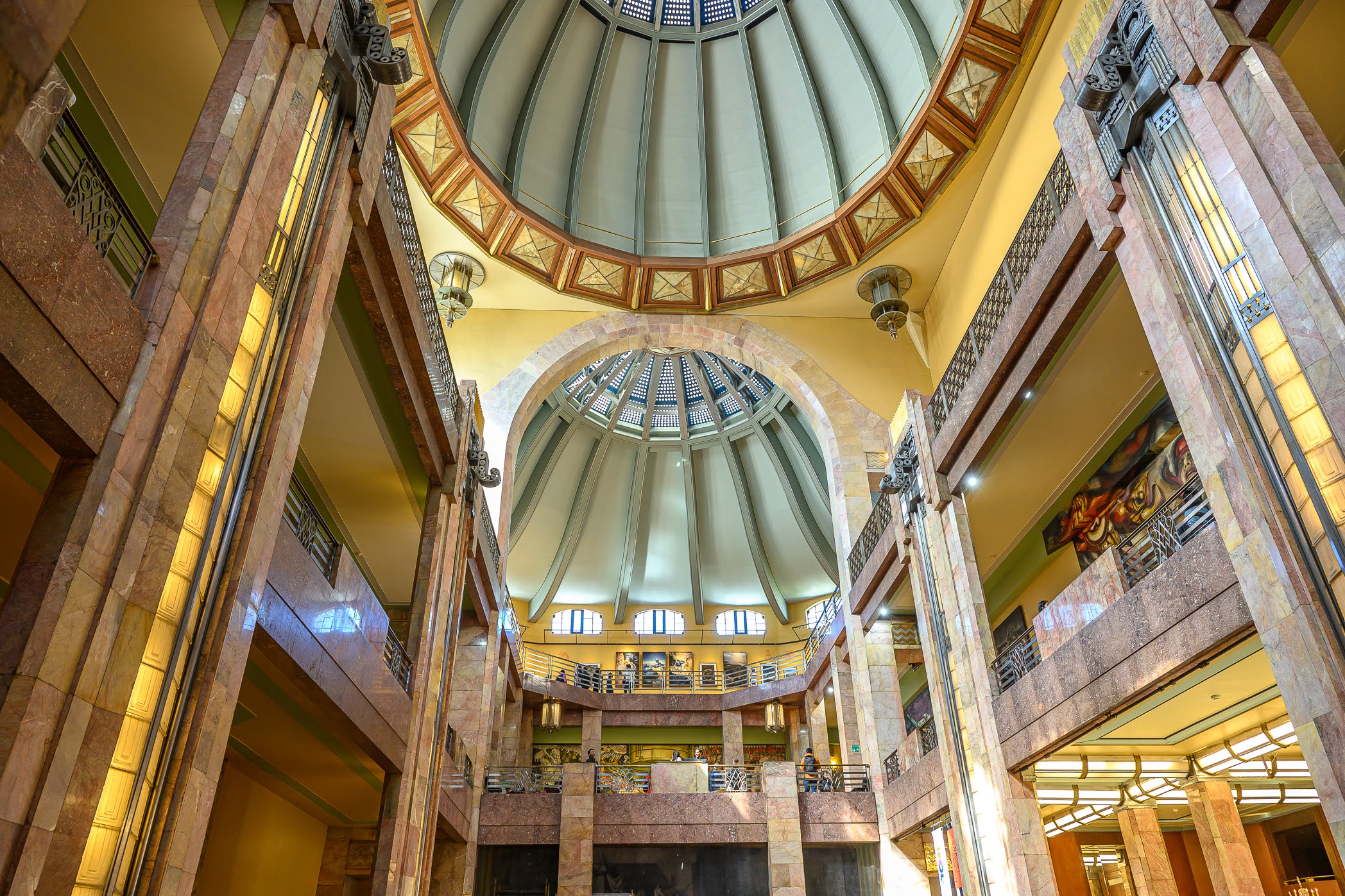
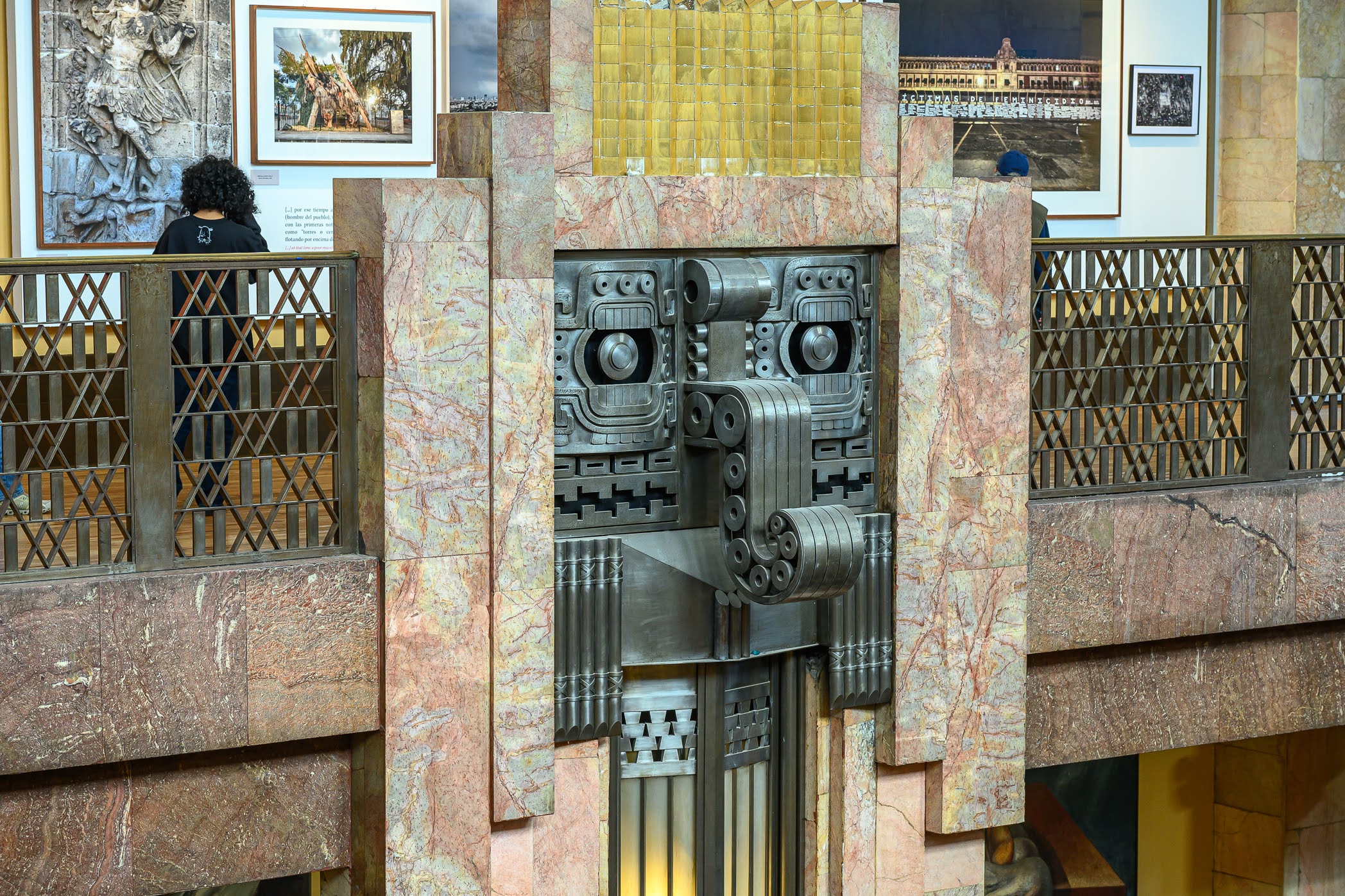
On the first floor there was a photography exhibit. There were lots of a little sections and themes of photos. One section focused on photos of the border between San Diego and Tijuana. I overheard a woman telling her daughter it was part of a project her father was involved in called Insite. The goal of Insite was to bring attention to what was at the time the second most crossed border, now the most crossed border. She seemed proud of her father. The photo was of a border crossing building that looked like a sinking ship.
The second floor has a set of magnificent murals. One by Diego really stood out me. It showed different groups coming together for World War 2. All the groups had their own zone in the mural including the communists and the Americans. In the American section there were labour unions going on strike, while rich capitalist were drinking cocktails. In the German section everyone was participating in a sort of death march.
Another mural stood out to me because if was so similar to a painting I had seen at the Gil yesterday. A fire was burning that was enveloping the feet of two natives lying down, while a dog barked. I wonder which image was a copy of which or maybe they both were based on a common image.
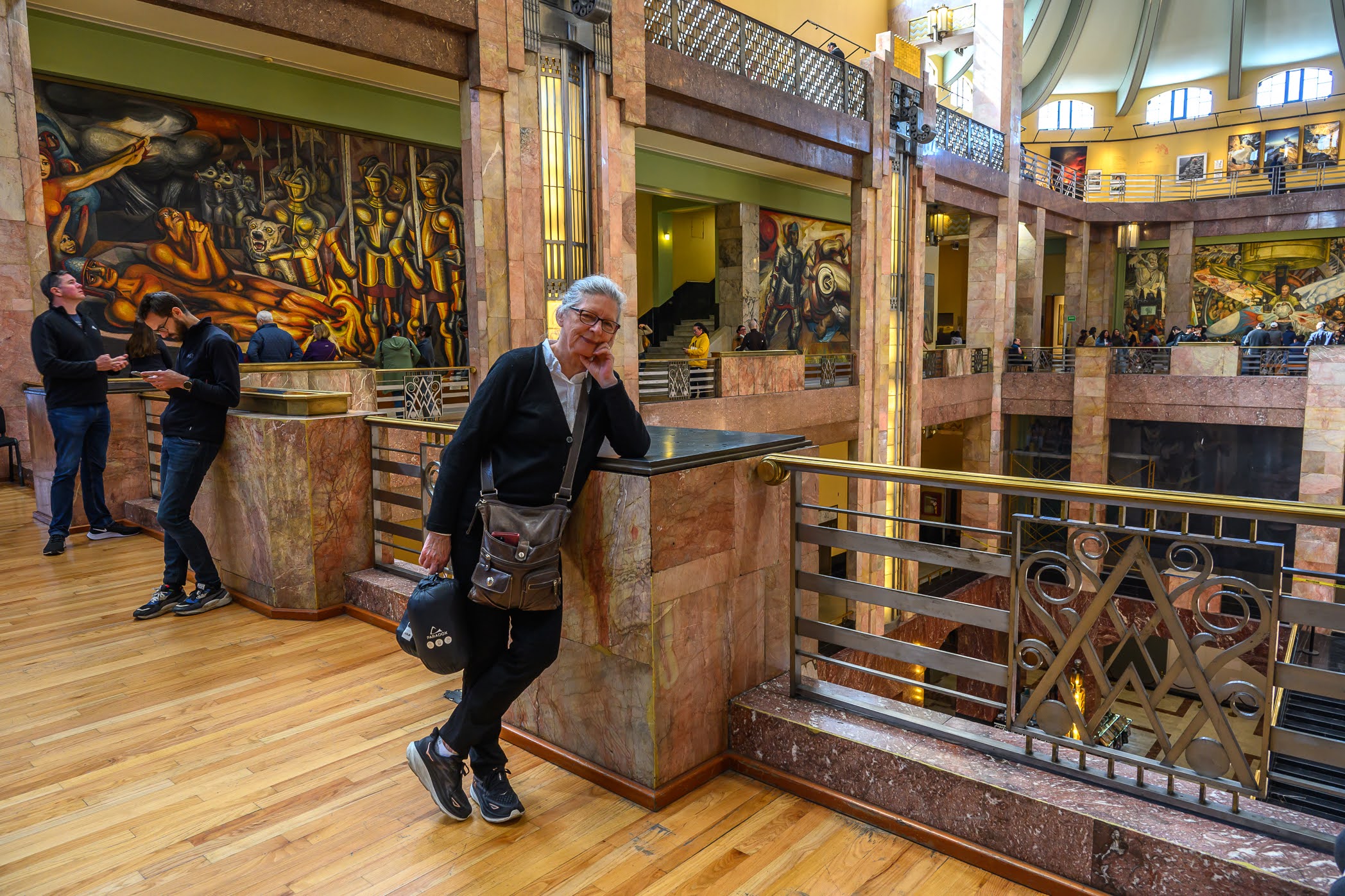
The third floor had landscape photography from around Mexico City. They even had one photo of the trail I had run on a few days ago.
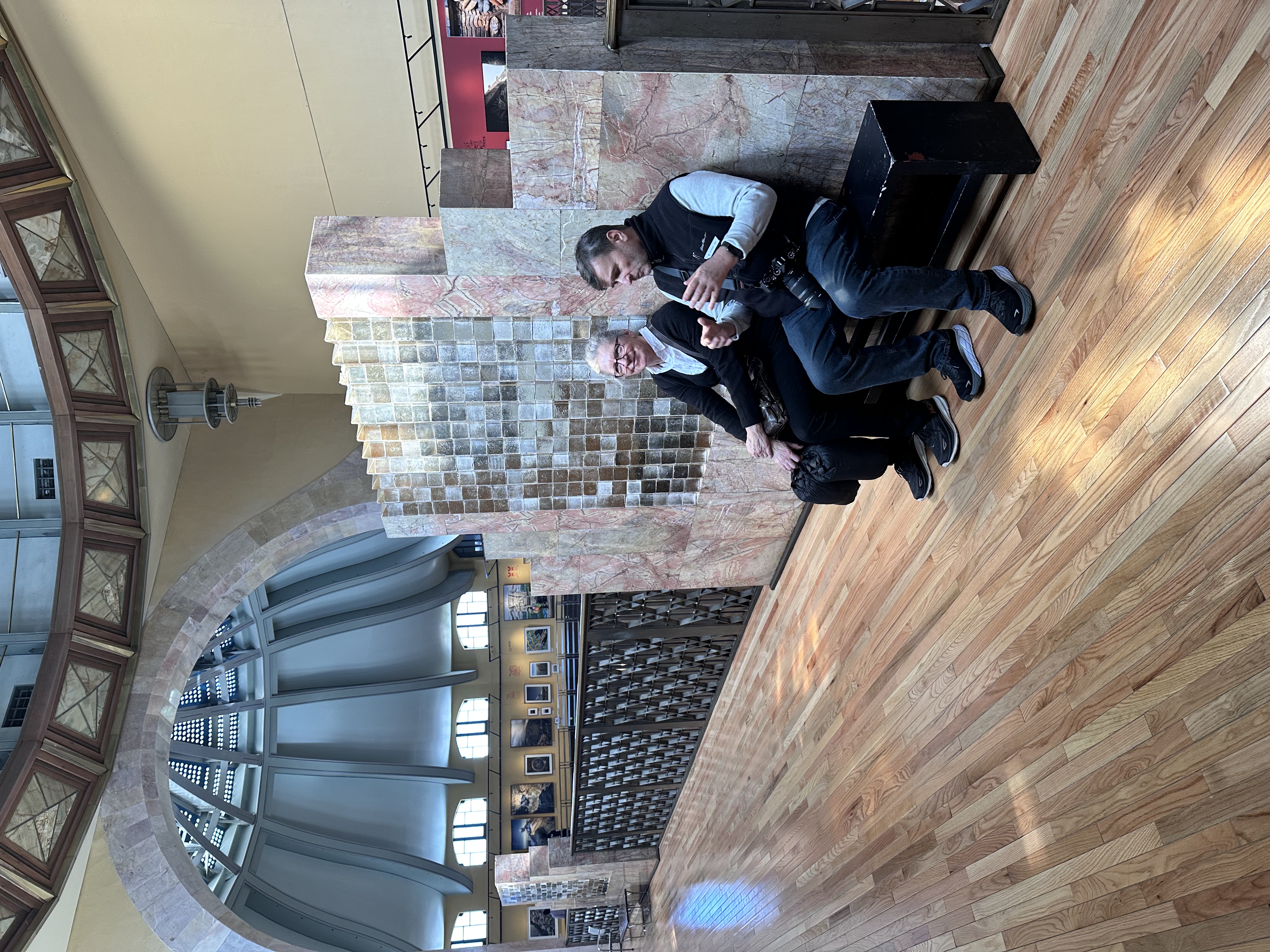
The museum also housed some temporary exhibits of contemporary art. Most of the pieces were of weird looking square, so if you’re into that it’s pretty cool. One exhibit had three glass boxes labeled as containing different dry cereals. Again cool if you’re into that kind of thing.
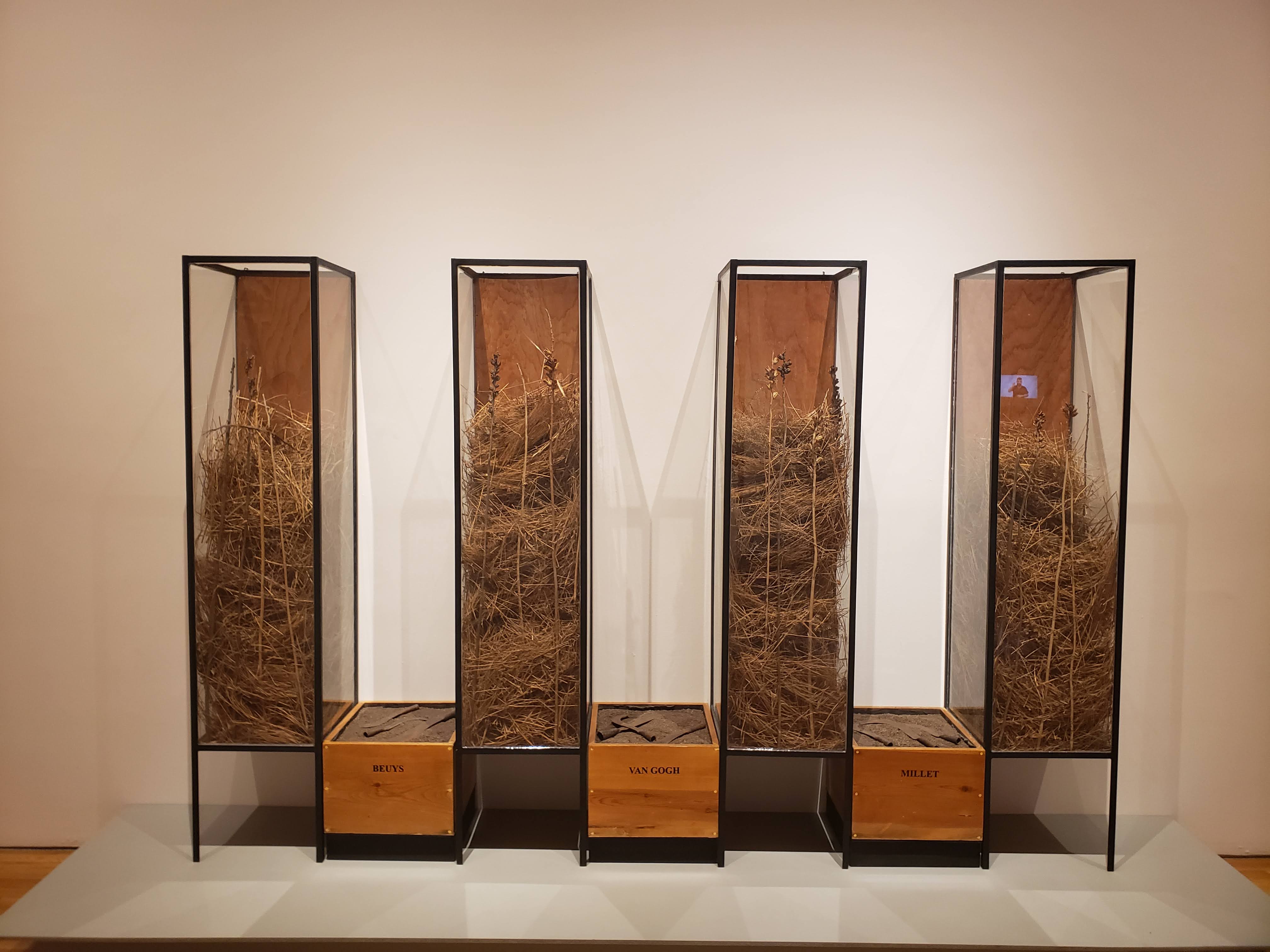
We walked along a crowded street to get to Zacopana Square. We stopped by a free museum, in a converted palace. We stopped by a church.
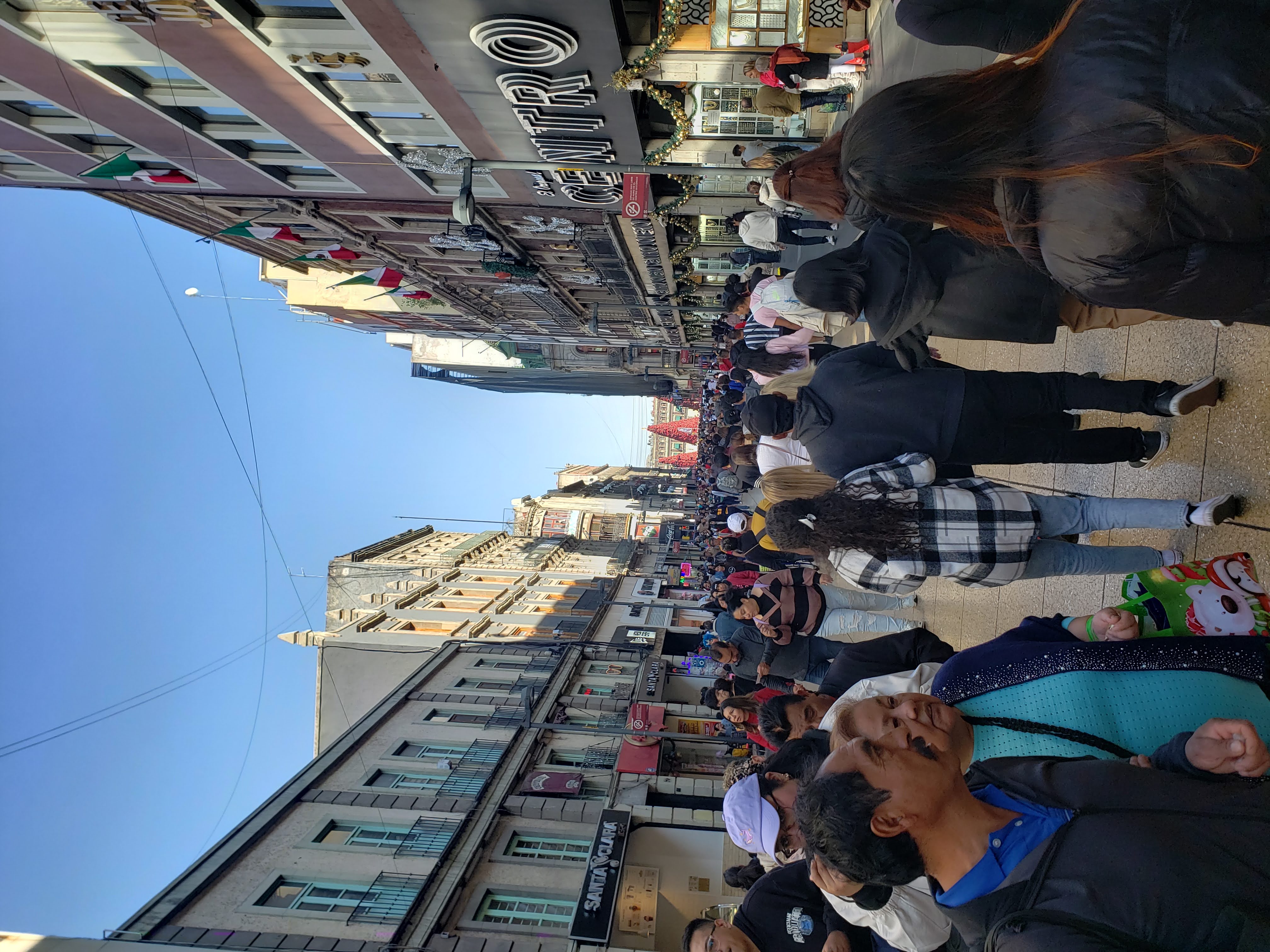
People were hungry so I directed the group to a restaurant, that kind of looked like the Mexican version of a diner, called El Sabor. I told the group that we could sit down and they had bathrooms.
They had a spit of Al Pastor out front. I got chiliquilies with Al Pastor. The rest of the group ordered alcohol, stuffed peppers with cheese, shrimp soup, and salted cod tacos. The description of the cod on the menu was, “desalted cod shredded and cooked with tomato paste and raisins”. It sounded quite weird, but what could I do. The cod tacos came out first and they were indeed a little bit weird. Lizy’s parents got kind of antsy, then left before I got my chiliquilies. I ate the chiliquilies with just Lizy who then ordered a queso dip which she also did not eat.
Zacapono Square

Lizy and I walked the rest of the way to Zacapono Square to meet her parents. It’s the most famous square of Mexico City and was featured in a scene of a recent James Bond movie. Big christmas trees adorned the square and there was a large stage being set up for possibly a christmas concert. We walked around a christmas market set up in a tent on the side of the square. There was some initial inertia, but I was eventually able to get the group to move on to an archeological museum I wanted to see. Lizy was especially accommodating because she knew I had been excited to see it.
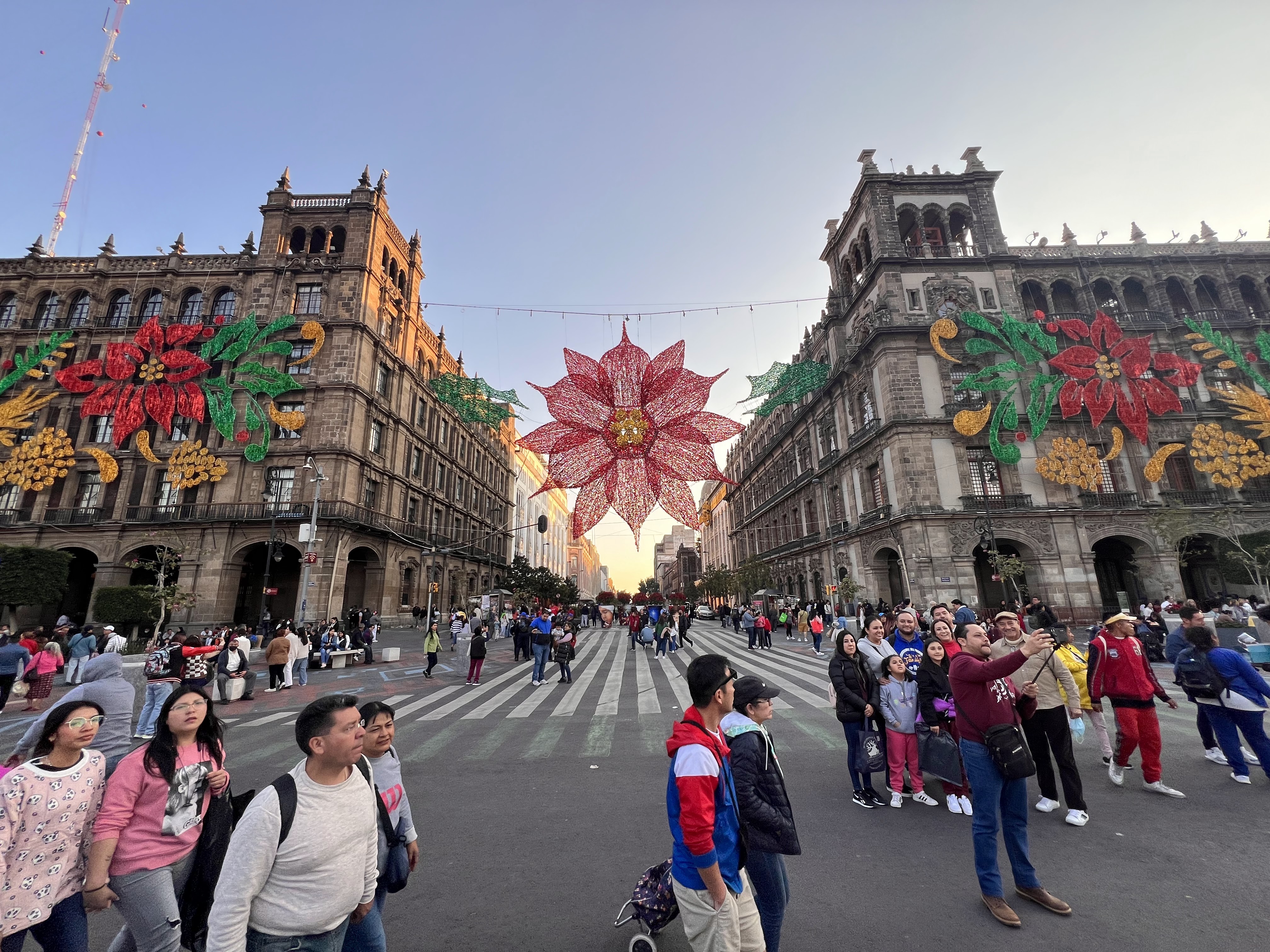
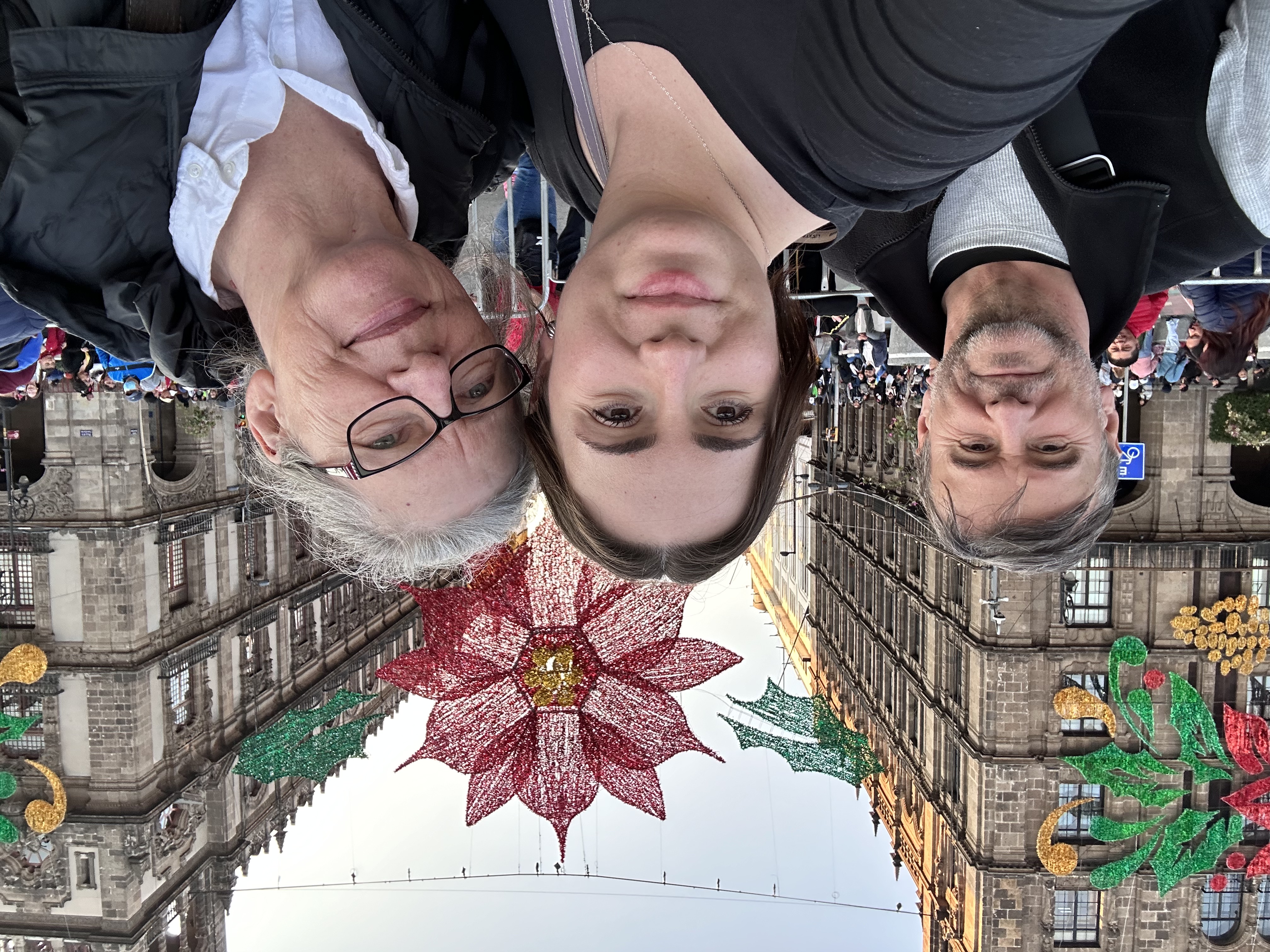
Museo del Templo Mayor
The museum had two parts. The first part was the excavation site consisting of the Aztec pyramid. Unfortunately, after Cortez’s conquest he harvested the outermost layer of the pyramid for its stones to build the church in Zacapono Square. However, the pyramid was built in many layers. Every new generation of Aztecs probably wanted to have a better pyramid than the last so they would renovate the pyramid. The inner layers were built earlier with the disassembled outermost layer being the newest.
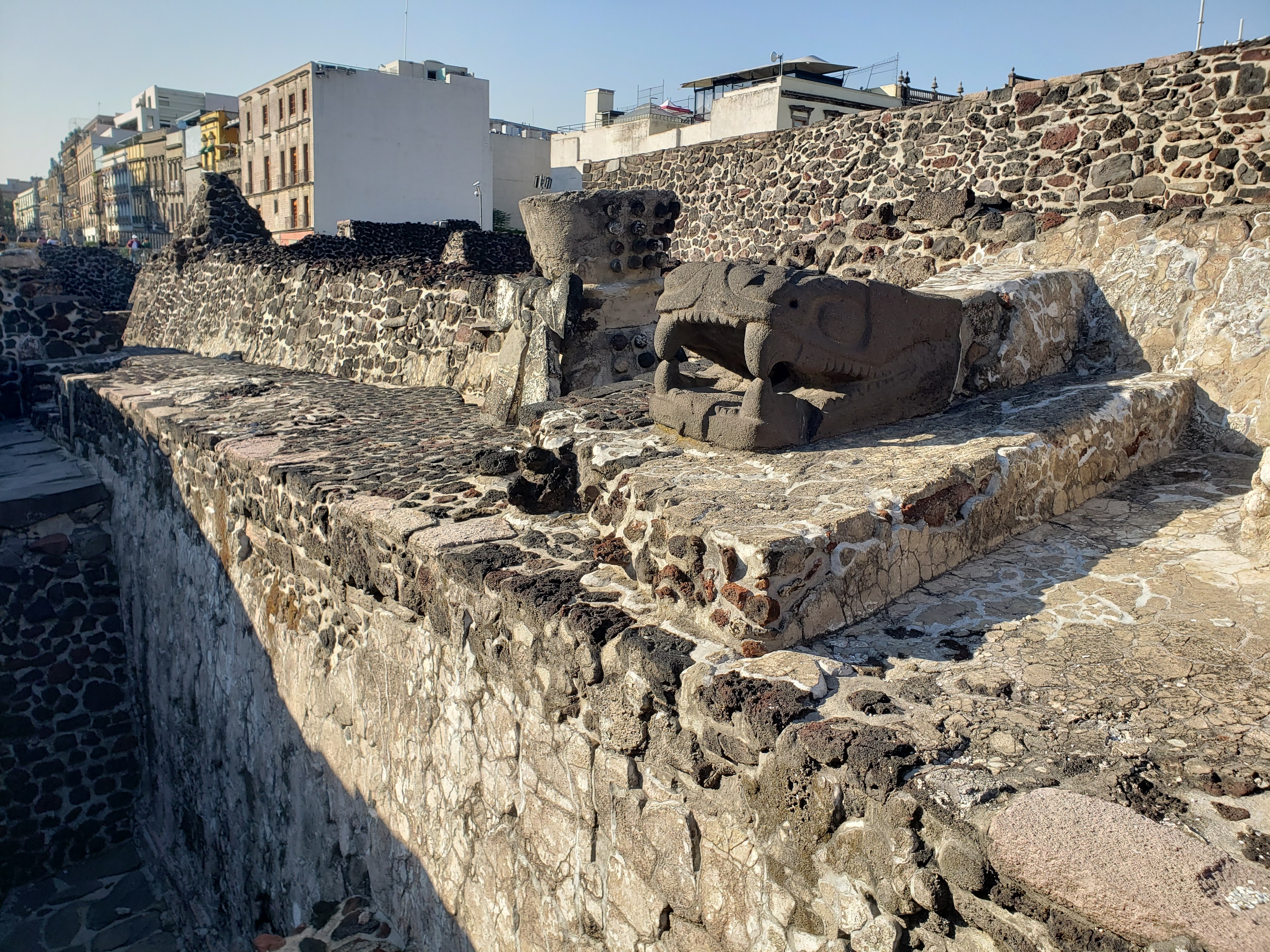
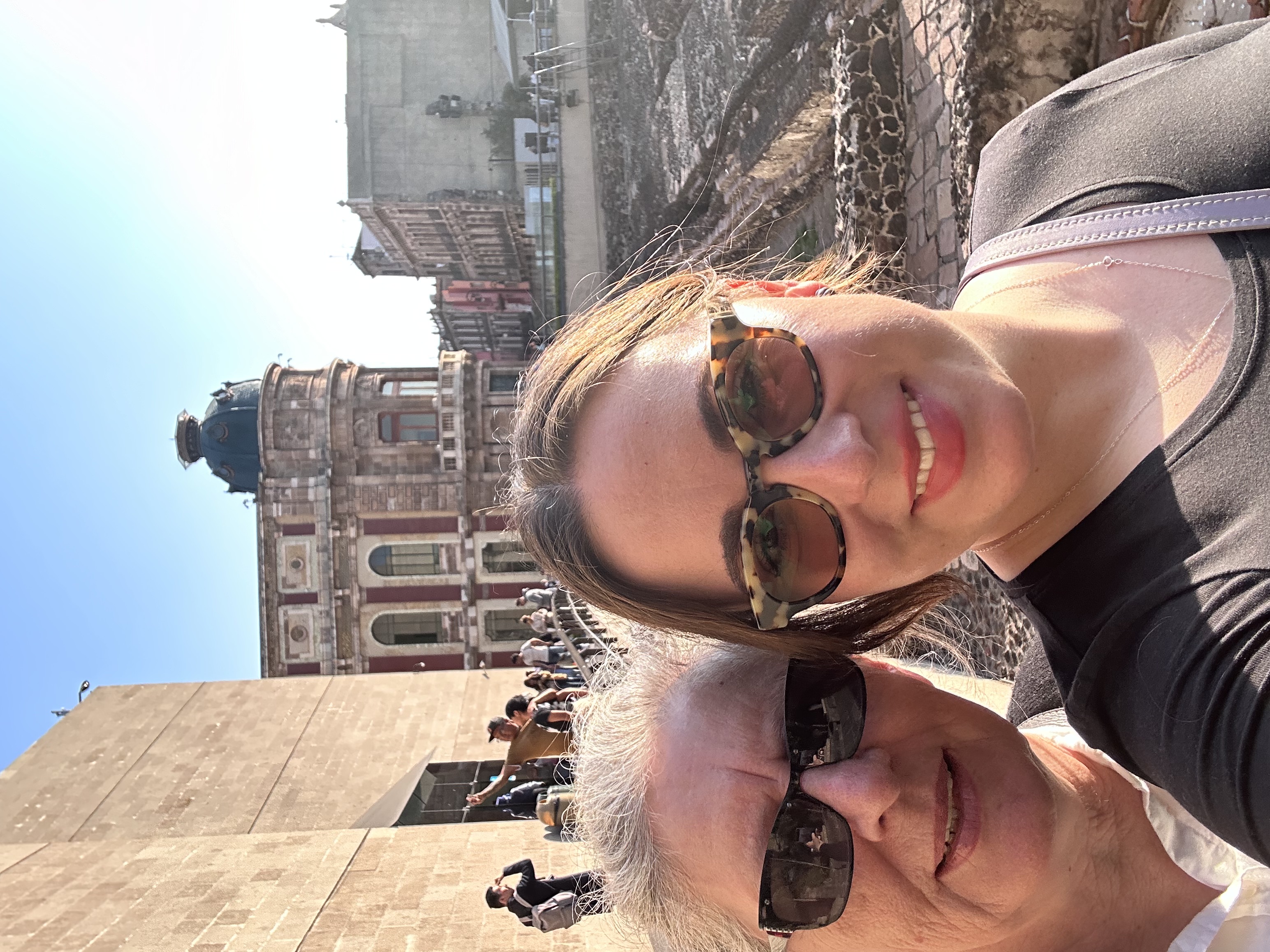
One highlight of the excavation site for me was a small temple on the outskirts of the pyramid with a wall composed of stucco encased skulls. I can only imagine how alien this kind of temple adornment must have seemed to the Spanish conquistadors during the conquest.
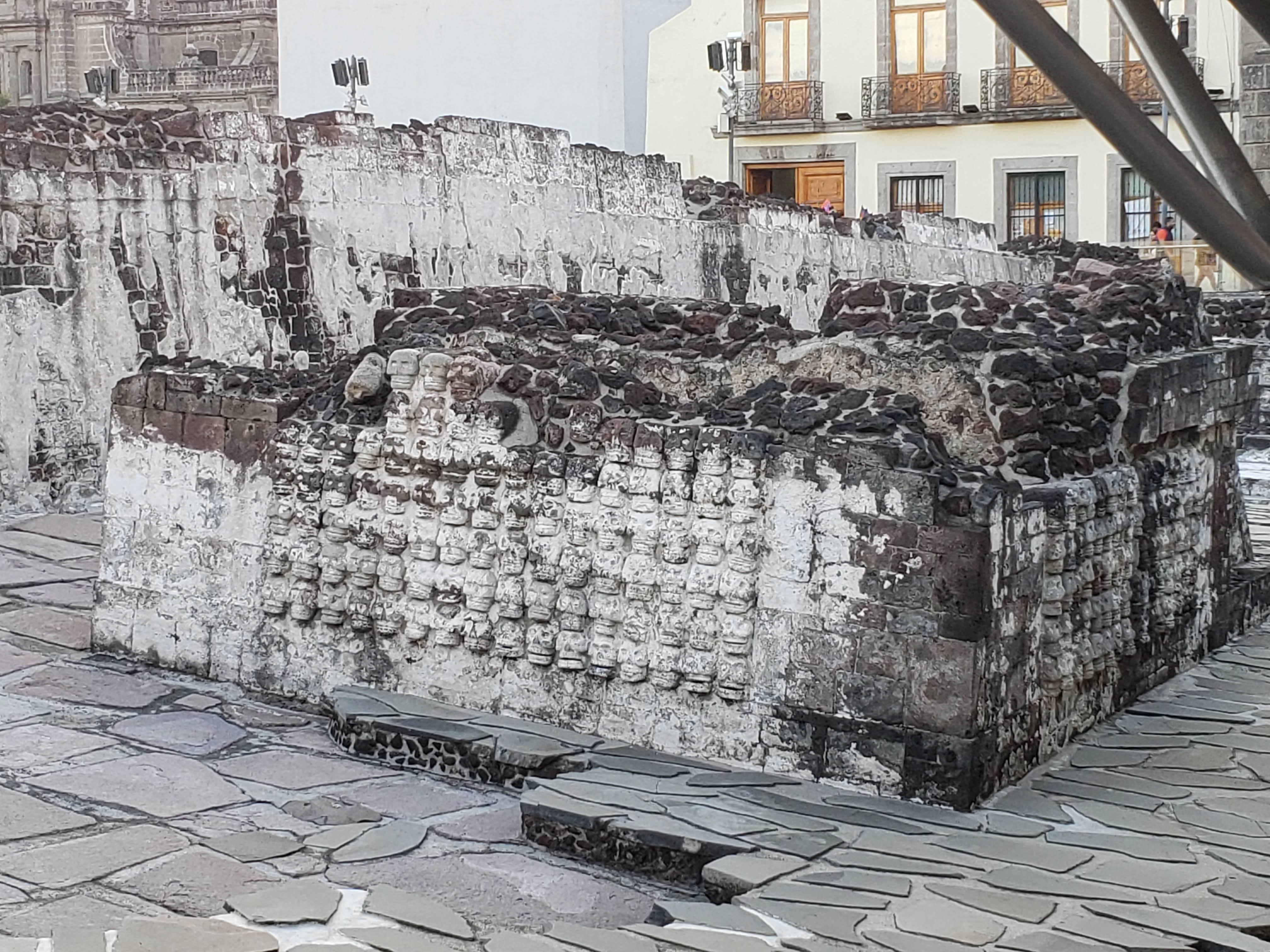
Next I’ll give a brief description of the museum. The museum was fairly vertical consisting of many floors. The floors were separated in two and one was expected to see half the floor working your way up the museum and then the other halves of the floors as you walked down the museum. The way up was was mostly themed around stuff the Aztecs had built that was found at the site, with the way down consisting more of natural artifacts found at the site.
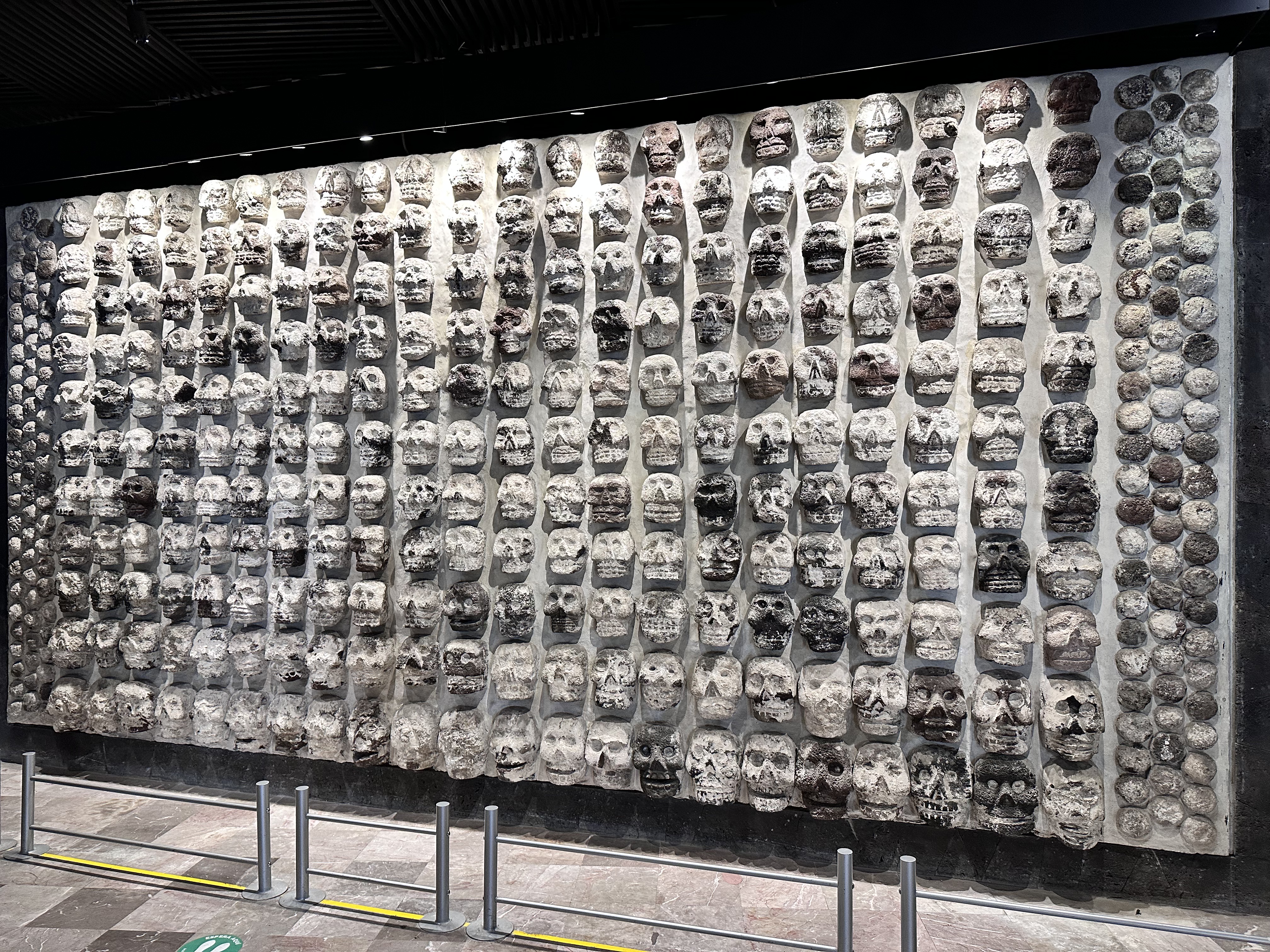
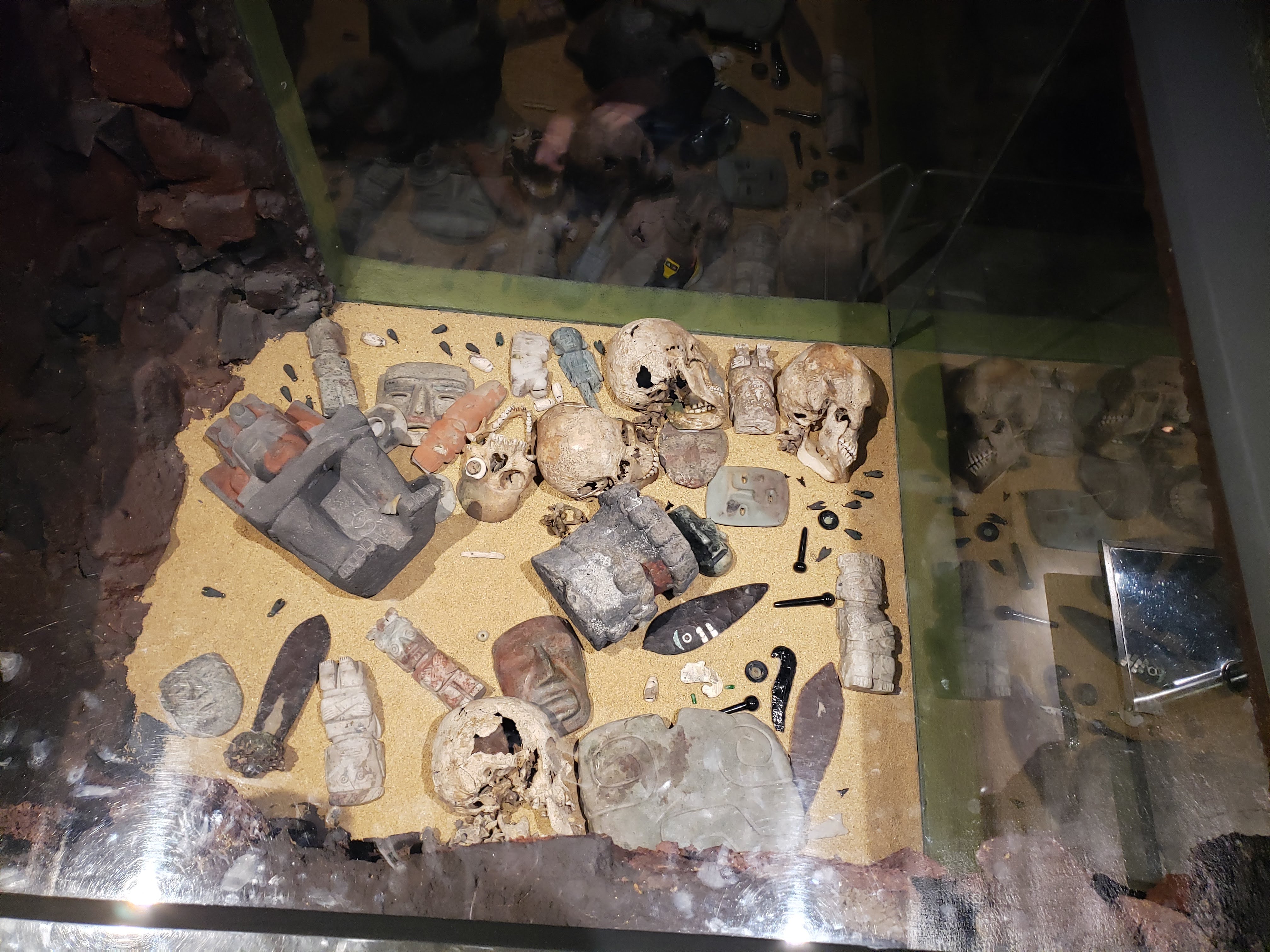
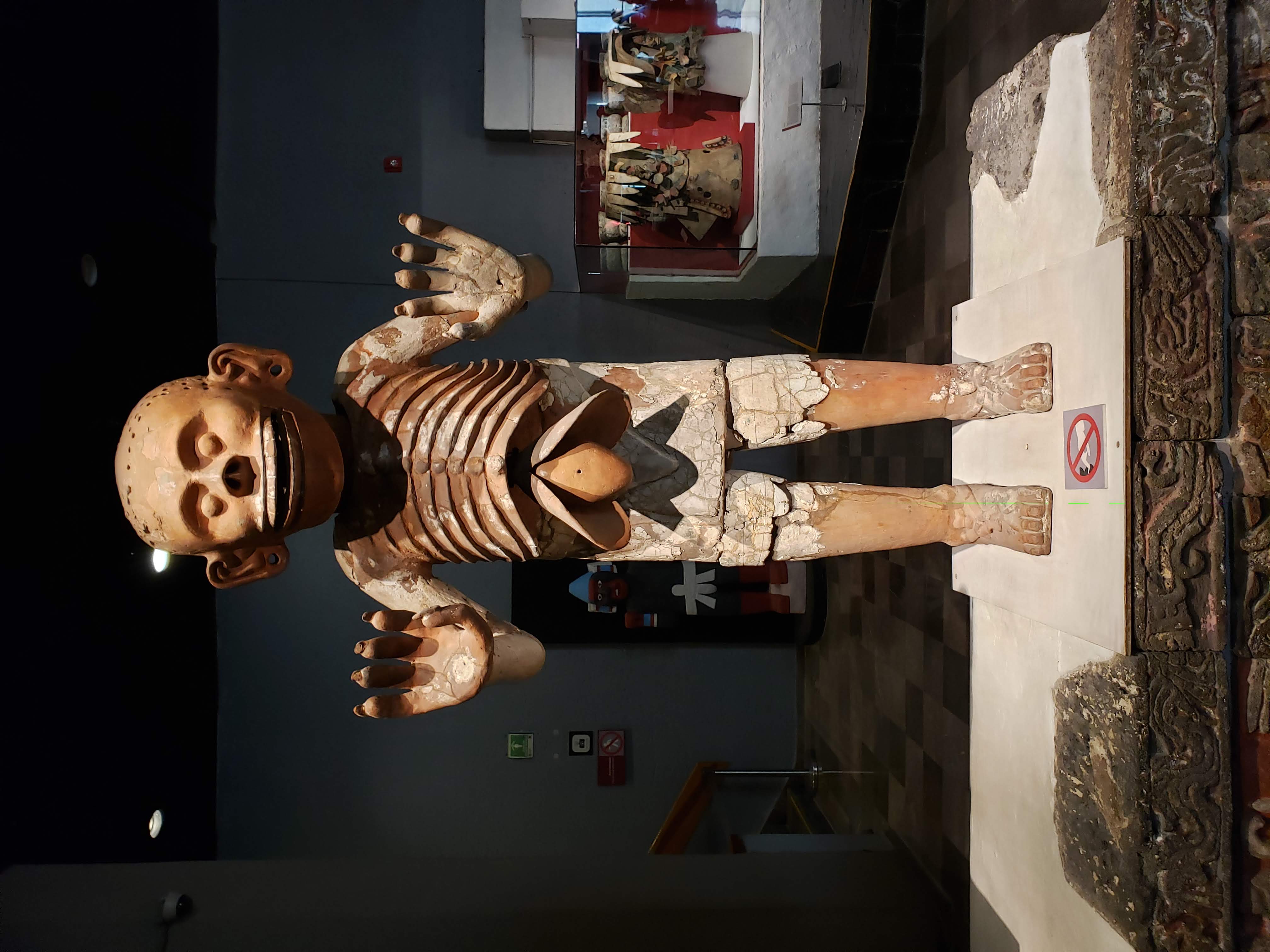
There were some particularly striking statues of Aztec gods. One statue I liked was a bust that was composed of two intertwined snakes. Another bust I found interesting was of Xipe Totec. He was depicted as wearing a mask consisting of the flayed skin from a human’s face. A god wearing a flayed skin mask seemed like something that had been repressed from the global imagination because I had never seen anything like it before.
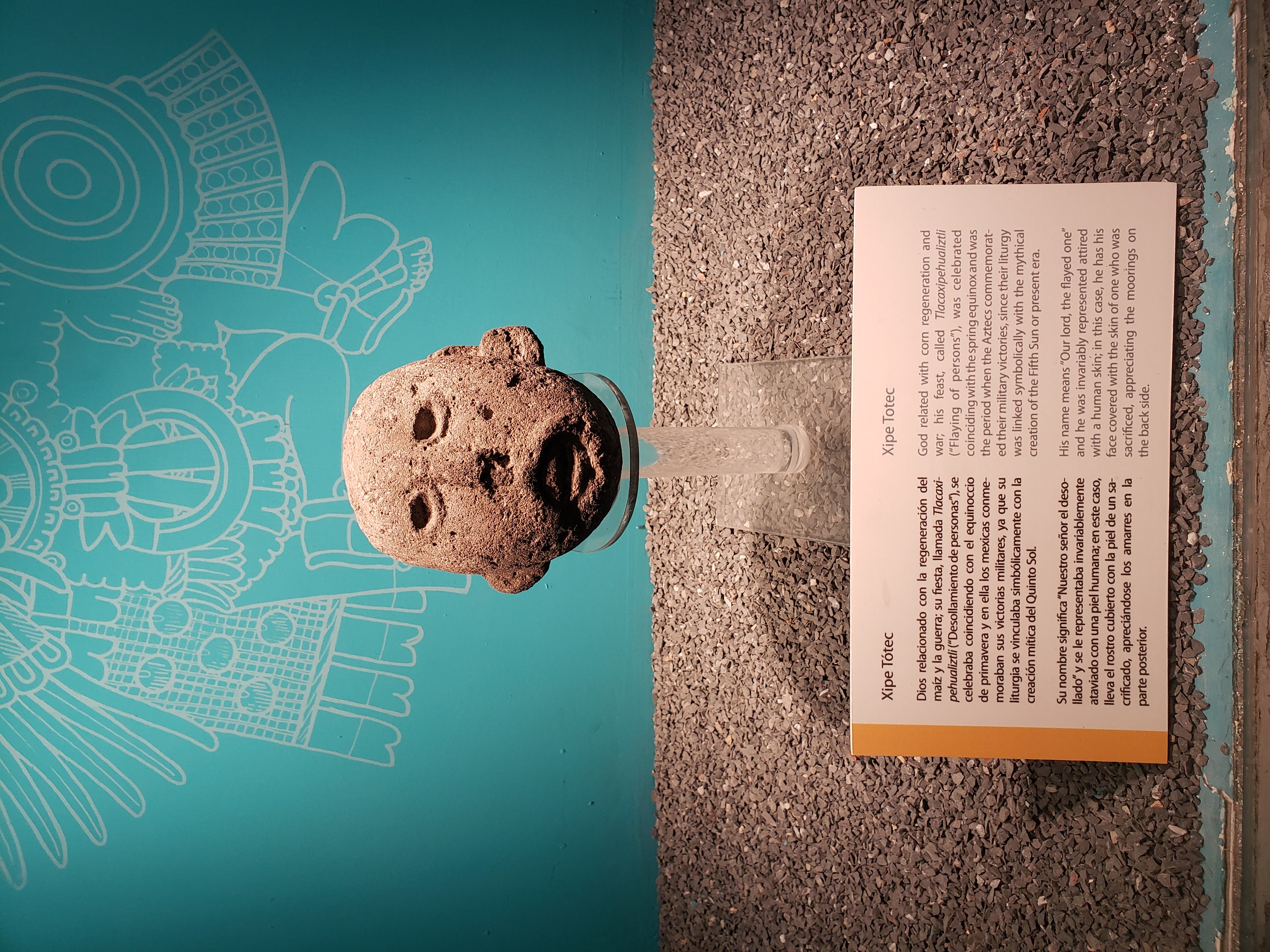
There were many ritual daggers on display. There were faces on the blades constructed of stones that were reminiscent of the google-eyed arts and crafts faces you’d make in a Kindergarten. But, I bet no one thought they looked silly when they were being plunged into human sacrifices on top of the pyramid.
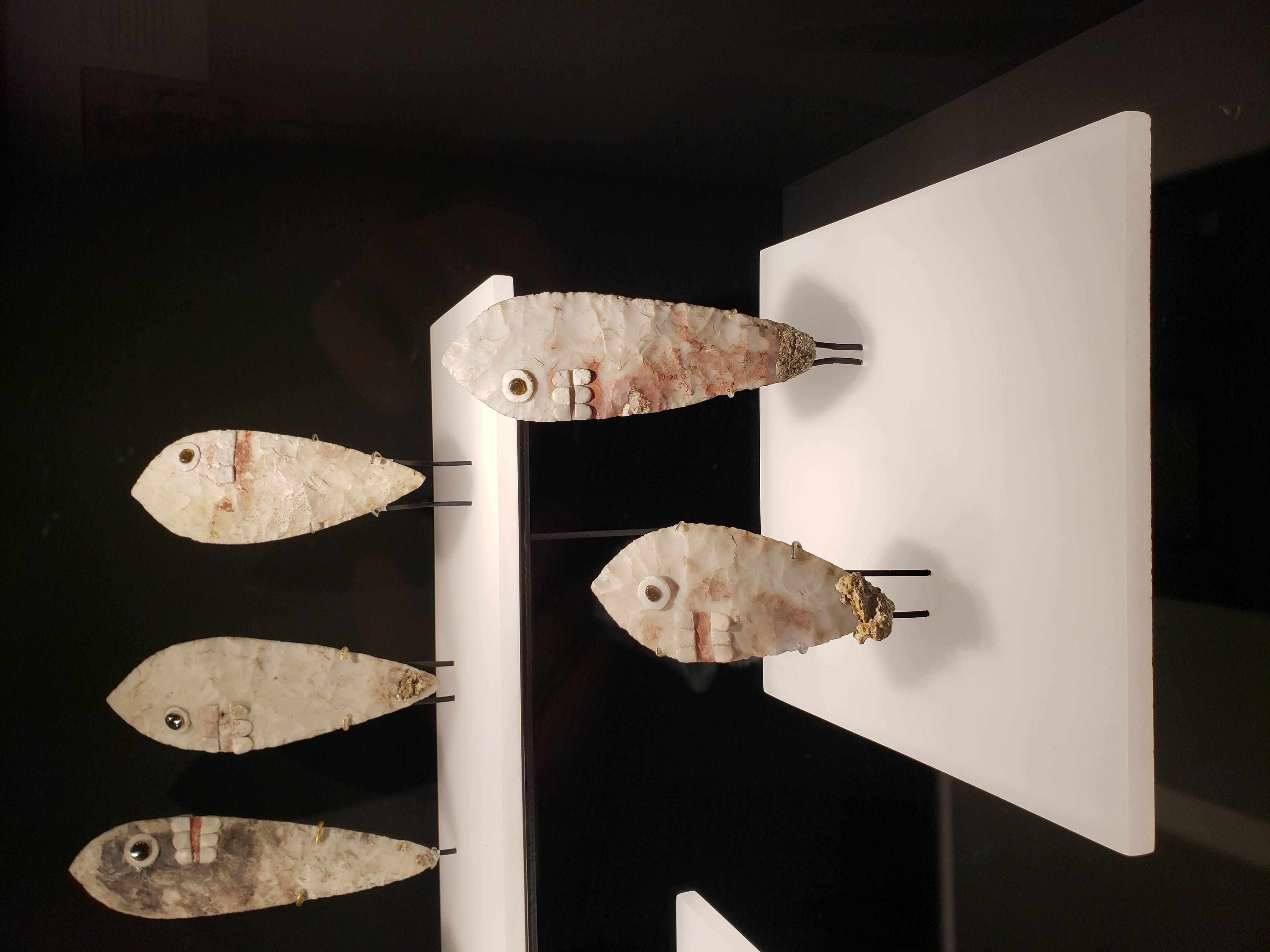
The half floors on the walk down the museum were largely centred around the animal and plant remains found at the excavation site. Since the temple was a place of pilgrimage for the surrounding native populations, the natural remains were more wide reaching than what was available locally and represented the natural goods the natives thought were significant enough to give as tribute. Even though the Aztec empire was predominantly an agricultural society, the animal sacrifices were composed of surprisingly few domestic animals and consisted mostly of wild animals. They included jaguars, pumas, birds, fish, snakes, and turtles. There were some domestic animals, including turkeys, but very few.
Tangent Comparing Aztecs to Ancient Jews
Seeing the emphasis on wild animal sacrifices, instead of domesticated goods made me draw the comparison between the sacrifices in ancient Judea. In ancient Judea the temple sacrifices were to my knowledge entirely composed of domesticated plants and animals. It actually would’ve been against the rules of Kashrut to sacrifice wild animals, because for the most part it’s not possible to kill a wild animal in a Kosher way, because for an animal to be killed Kosherly it needs to be killed in one, clean strike along the neck, while the animal is still conscious. Furthermore, there are stories in the Torah, most notably the story of Jacob and Essau, which cast hunting as morally dubious, which is in striking contrast how in Aztec society hunting wild animals seems to be seen as righteous.
I was further reminded that in college, my friend Josh was obsessed with the book [Ishmael] (https://en.wikipedia.org/wiki/Ishmael_(Quinn_novel)). For those that haven’t read the book, it’s about a man that gets lessons in history from a talking gorilla. The main thesis is that the stories in the Hebrew bible were written predominately to push the moral superiority of agriculture, so that the elites could get the working class to become farmers, even if it was against their interests as it related to their quality of life. The book asserts without the propaganda of the bible poor people would realize they could live better lives as hunter gatherers and the elites wouldn’t be able to collect aggregate wealth that would allow them to live lives of leisure. This theory seems to be contradicted by the Aztec archeological record, as the society was able to stabilize as agricultural, while still promoting the virtue of hunting wild animals, but you know what they say about talking Gorillas: they’re Eurocentric.
Going Home
After the museum, I met up with Lizy and her parents back in Zacapono square. Lizy’s parents were tired so we went back to the car as fast as possible weaving are way through the throngs of people. The Palalico Belle Artes, where we had been earlier in the day was now lit up for the evening.
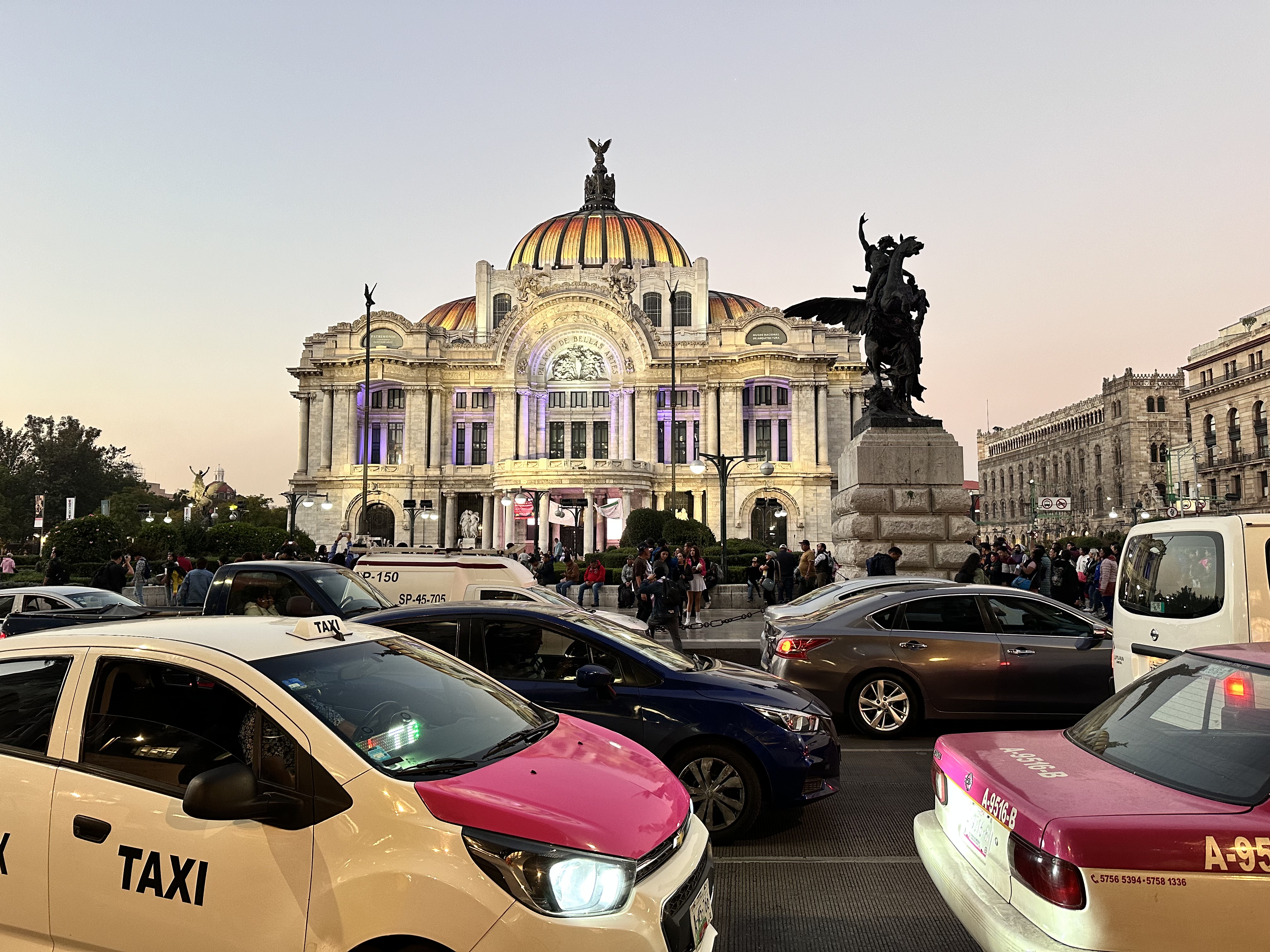
On the way home I thought a cop might be trying to pull us over, because he was blinding me with the light from his siren. Once I realized he didn’t have his siren I realized I’d just have to deal with being blinded by the cop as that was just the way cops drove.